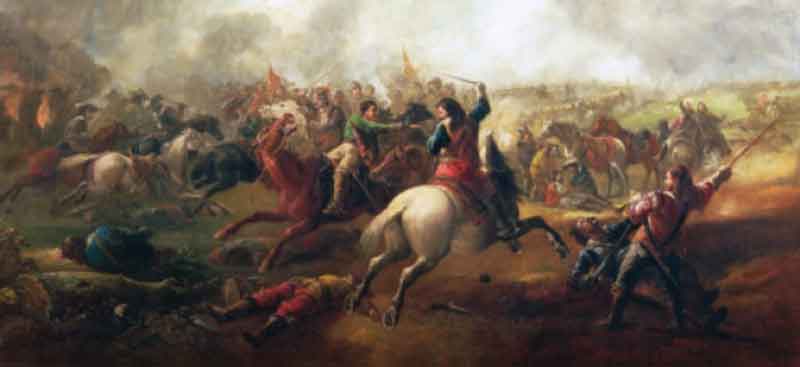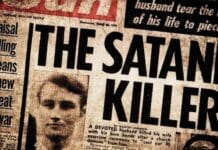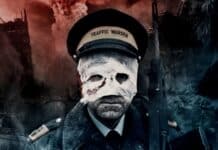Ghosts of the English Civil War still haunt Marston Moor in North Yorkshire, says author KAI ROBERTS

One of the most decisive engagements in the English Civil Wars, the Battle of Marston Moor was fought on 2 July 1644 when the Parliamentarian forces led by Lord Fairfax and the Earl of Manchester decisively routed Royalists led by Prince Rupert.
The Cavaliers had been sent liberate the Marquess of Newcastle whose army had been under Roundhead siege at York throughout the summer; but whilst they successfully relieved the city on 1 July, Prince Rupert foolishly sought to engage the Parliamentarians in a pitched battle the next day.
The conditions were scarcely auspicious—the battle took place at evening during a thunderstorm—and the Royalist troops were simply outnumbered and outsmarted.
Cromwell’s cavalry cut a vast swathe through their ranks and it is estimated that 4,000 Royalist soldiers died, compared to a mere 300 Parliamentarians.
Along with the Battle of Towton—fought in the same area 183 years earlier—Marston Moor is regarded as one of the bloodiest clashes in English history. It is scarcely any wonder that it left a substantial psychic scar on the region.
Following the conflict, the casualties were buried in mass graves—on unconsecrated ground and without ceremony. In the minds of our ancestors, those interred under such conditions cannot gain entry to Heaven and their restless spirits are condemned to walk the earth for ever more.
In 1886, the York historian, William Camidge, recorded just such a tradition in the vicinity of Marston Moor. He refers to a popular belief that “blood-stained soldiers galloped the neighbourhood”; whilst “a headless officer, each night came forth on a phantom horse” vainly searching for the battle.
The ghosts documented by Camidge are resolutely traditional; the rumour-legends of local folklore rather than first-hand witness accounts. However, in his seminal work, “Apparitions and Haunted Houses: A Survey of the Evidence”, Sir Ernest Bennett catalogues just such a report.
Two friends driving across Marston Moor one evening in November 1932 observed “three men… wearing large soft hats, dark plum-coloured cloaks and leggings”. They were later told their description matches the uniform worn by Cavaliers during the English Civil Wars.
The figures were walking along the road some twenty to thirty yards in front of the car, but when the vehicle slowed down to pass them, they had vanished.
Both passengers witnessed the apparitions and after they disappeared stopped the car to search for the curiously attired gentlemen. However, they found no sign of anybody and there was no hedge or wall over which they could’ve vaulted.
The countryside surroundings the roads across Marston Moor is relatively flat pasture which does not provide much opportunity for concealment.
A similar sighting was reported in 1968 by a party of tourists driving along the country-lanes around Marston Moor fruitlessly searching for the road to Wetherby.
They noticed what they thought were “half-a-dozen tramps” walking along a ditch; slowing down, the motorists realised the men were wearing 17th Century dress, but concluded they were drunken actors before driving on.
Only later—when they learnt they’d been driving across the battlefield itself—did details such as the men’s begrimed attire and their look of weary exhaustion attain more sinister significance.










I’ve lived local all my life to Marston Moor and I’ve heard tales of soldiers being seen, and the sound of horses thundering along and men marching in the dark, with no explaination. It’s heard that on quiet days, you can hear the cries of the men in battle.
The Sun Inn had musket/cannon balls found on the fields.